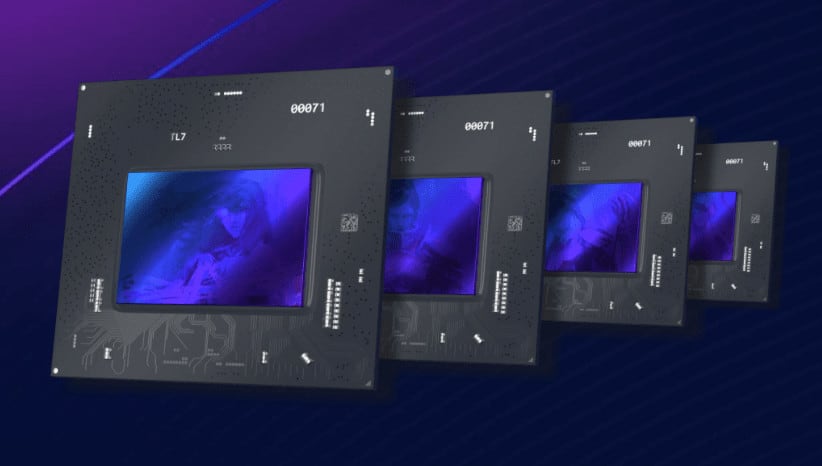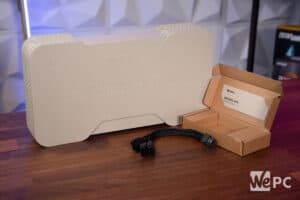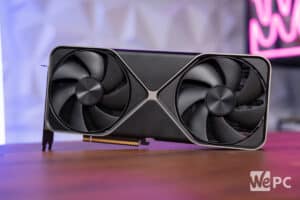Intel list a ‘DG2MB’ motherboard with a dedicated GPU & 200W TDP
A curious Intel listing pops up online

WePC is reader-supported. When you buy through links on our site, we may earn an affiliate commission. Prices subject to change. Learn more

It’s not long until we’re going to be getting our first look at Intel’s Arc Alchemist GPUs, however, something curious has cropped up, as spotted by Igor’s Lab. Over at Intel ARK, a database for new entries into Intel’s products and information, a new entry for a DG2-based graphics card has appeared. These product databases are available to those who signed an NDA and receive information about new products for entities like board partners and the like. But, this database entry looks a bit strange in the eyes of many.
Igor’s Lab states that the board has enough pins to be considered as having a discrete GPU solution, and is indeed possessing the ‘DG2’ moniker in its name, but adds a curious ‘MB’ onto the end, which could potentially pertain to the system being tied to a motherboard directly. This is corroborated by the fact that it also had a reported speed of 4 GHz, which would mean that we might be seeing dedicated silicon soldered onboard an Intel CPU motherboard for laptops.
In addition to this, the board has a TDP of 200W, which is almost unheard of for a laptop. We already know that the desktop-class DG2 512 GPU runs at up to around 225W, but this much TDP in a laptop or mobile GPU is extremely unusual. Unless, the TDP is being calculated off of the total GPU, CPU and additional power requirements from the motherboard, which can also be used to power things such as the display. It’s still an enormous amount of power to be lugging around in a single board, especially if it’s in a portable form-factor.
It could be that this experimental board will never touch the hands of consumers, but it certainly appears to be a desktop-class GPU soldered onto a laptop’s motherboard to us. If true, it could be an incredibly powerful dedicated laptop solution for gamers and creators, but it just looks to be simply too high for any sort of consumer product. It’s possible that this could instead be a laptop solution that’s intended for internal testing purposes only, or just a wild experiment one of the teams at Intel has cobbled together, too.
What if it’s not for a laptop at all?

Many have speculated that it’ll be a laptop board, but what if it’s instead a competitor to something like an all-in-one, like the Apple iMac? The form-factor would make sense, and so would the TDP. It’s possible that Intel might be targeting this market after seeing Apple’s success with the M1 iMac, which essentially also puts a mobile chip into a desktop-class machine. This would allow for the device to continually receive the power demanded from the chipset, in addition to being able to manage any thermal issues with a slightly larger body than a laptop would usually allow for.
Honestly, it’s really the only thing that makes much sense about the motherboard, so we’re not too averse to the idea of a ‘gaming’ focussed all-in-one with all of the horsepower needed to run some of the latest games. It’s an underserved market, that could also proliferate the B2B space as ‘esports’ focused machines. Honestly, it’d be a bit of a masterstroke for Intel to come ahead with a product like this instead of languishing with a cloud-based solution, as they have previously touted.
The idea of stuffing that TDP in a laptop would also bring up the question of how on earth they would manage to cool this amount of power in a portable chassis. Of course, for many high-end laptop manufacturers, the word ‘portable’ quickly becomes subjective. With SFF computing and ARM coming in as a genuine threat to the traditional x86 architectures, traditional manufacturers need to rethink a lot of their processes, lest that x86 be made completely obsolete by the increasingly more powerful and power-efficient options over on the ARM platform.
We saw our first Snapdragon-powered laptop, and we’re only going to be seeing more of that very soon, so diversifying into a product category where you could make a meaningful difference would be an enormous win for Intel, as AMD has seemingly not yet rolled out any such products out onto the market yet, either, despite Rembrandt offering decent gaming performance and respectable power draw. This trend will only continue, and the X86 market really needs to respond in kind in order to keep up, otherwise, threats from Apple and other ARM-based silicon chipmakers look to steal away market share from a burgeoning product category that many traditional product-makers and foundries simply cannot keep up with.
When will we know more about Intel Arc GPUs?
Regardless of what ends up happening, or what this product actually ends up being, we’ll be sure to see more from Intel’s Arc Alchemist laptop GPU lineup on March 30. The company has announced previously its intention to first bring Arc Alchemist over to their laptops, before heading into the desktop market later in 2022. This is nothing too unusual, as they’ll want their grand debut to go up against the likes of AMD’s RDNA 3 and Nvidia’s Lovelace graphics cards.
Where Intel may have an edge in their strategy is by rolling out attractive-looking Arc Alchemist GPUs in laptops, before any of these brand-new competitors manage to arrive on the scene, giving them months of market proliferation, before Nvidia or AMD decide to roll out their newly-updated competitors for the dedicated laptop space.
2022 is looking like a year of seismic changes for the industry, from stock relief to other things like new CPU and GPU architectures. It’s been a long road since 2020, and we can’t wait to see what else companies will begin to reveal about their upcoming devices. Competition in the industry languished for years, but with so many companies now turning up the heat with their offerings, it’s an incredibly exciting time to follow PC tech. If you want to tune in to Intel’s address on their new graphics cards, you can find out where to watch it right here.











